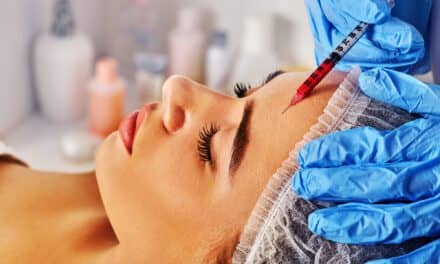By Greg Pierce and Devon Niccole
In 2022 Americans spent a whopping 11.8 billion—yes, with a B—dollars on aesthetic procedures, according to the Aesthetic Society. Estimates from the American Society of Plastic Surgery say that in 2022, that amounts to nearly 1.5 million cosmetic surgery procedures performed on the face, body, and chest. In recent years, surgeons have seen the amount of procedures tick up, with a 19% increase in the number of surgeries performed between 2019 and 2022 alone.
Perhaps as part of a cultural shift, we’re seeing more people become comfortable with the idea of cosmetic and aesthetic procedures “just because.”
Based on our industry experience, there is currently less stigma associated with this type of care than ever before. For many individuals, treatments such as fillers and neuromodulators are increasingly integrated into their routine self-care practices. Still, because cosmetic procedures are largely voluntary and elective, patients must foot the bill themselves.
So, even though cosmetic procedures have become more commonplace, that doesn’t necessarily mean they are easily affordable for everyone. Depending on the treatment, costs can range from between a couple hundred dollars for neuromodulators, fillers, or hair removal to thousands for breast augmentations, rhinoplasties, and liposuction. For patients looking to make aesthetic changes, these prices can intimidate and deter them from receiving the care they want.
Aesthetic Care Affordability
In 2021, consumer financial services company Synchrony conducted a study revealing that, on average, patients take more than four months to make decisions about cosmetic care. During that time, patients conduct extensive research on everything from providers and practices to products, procedures, and payment options.
As mentioned earlier, cost concerns are a constant factor for cosmetic patients, and unfortunately, this is a widespread issue in the healthcare sector. Patients are overburdened with the responsibility of their healthcare costs, a result of ever-increasing out-of-pocket costs, high inflation rates, and health plans offering less coverage for more money. It’s all adding up to overwhelm today’s patient. Cosmetic procedures are typically elective and not medically necessary, placing the burden of covering the costs squarely on the patient.
However, as practice leaders, you can reassure patients that they can proceed with their desired care despite the associated costs.
Patient Resources
Prioritizing conversations around costs should be top of mind when a new patient seeks a consultation or referral for care. Especially for people new to cosmetic surgeries, it’s important to set the stage for what they can expect from their first appointment through their recovery process so they can begin planning appropriately. Conversations around costs also should be supplemented with information on the financial resources available to help pay for care once the time comes.
Patients have various options to finance their desired cosmetic procedures and treatments, including:
- Health Savings Account (HSA): This is available to those with a qualifying high-deductible health plan to save pre-tax dollars specifically for healthcare expenses.
- Flexible Spending Account (FSA): This is a pre-tax saving account that can be used for health-related expenses like copays, deductibles, and prescriptions.
- Savings Account: Even a basic savings account can help set aside money for costs not covered by insurance.
- Financing Solutions: Offering in-house or third-party financing solutions, such as the CareCredit health and wellness credit card, give patients the flexibility to pay for their care over time.
Setting up your patients up for financial success also includes making sure every patient has the opportunity to reach their aesthetic goals. If you’re looking for ways to introduce more options for your patients, a third-party solution like CareCredit is an easy place to start. But, ultimately, the goal is to provide resources that make it easier for your patients to afford out-of-pocket expenses and achieve their dream results.
Devon Niccole is the CEO of CosmetiCare and Greg Pierce is senior vice president and general manager, specialty, for Synchrony’s Health & Wellness business, including Synchrony’s CareCredit credit card and recent Allegro Credit acquisition.





